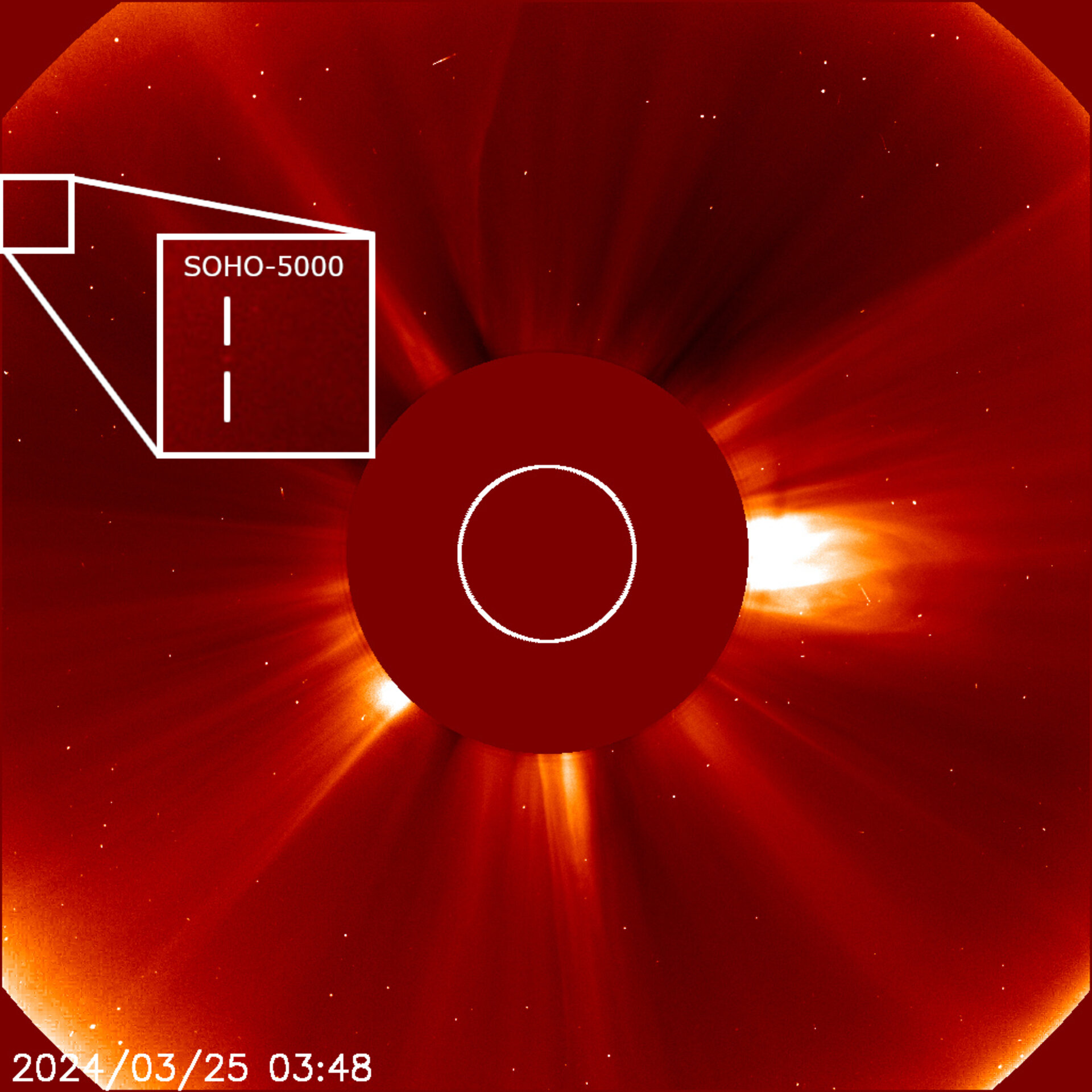Solar spacecraft 'SOHO' discovers its 5,000th comet
"The fact that we've finally reached this milestone — 5,000 comets — is just unbelievable to me."
In December 1995, an observatory traveled nearly a million miles from Earth as part of a $1 billion mission to study the sun.
However, what scientists thought would be a two-year endeavor for the Solar and Heliospheric Observatory, also known as SOHO, turned out to tremendously exceed expectations. Not only has SOHO become the longest-lived satellite watching our star, but it has also become a serendipitous yet prolific comet hunter. And on Monday (March 25) — a little over 28 years since its launch — the observatory discovered its 5,000 comet.
Related: Widespread solar storm struck spacecraft near the sun, Earth and even Mars
SOHO's instruments are designed to block the blinding glare of our sun in order to study its extremely faint outer atmosphere, the corona, which is a billion times fainter than the sun's body itself. The same technique helps the observatory spot comets as well, including ones that slingshot around the sun, passing so close to its sizzling surface that scientists call them "sungrazer" comets. Prior to SOHO's launch, there were only a couple dozen sungrazers on record.
"That's all we knew existed," Karl Battams, a space scientist at the U.S. Naval Research Lab in Washington, D.C., said in a statement. In fact, SOHO has so far discovered more than half of all known comets, including some sungrazers of course, which are cataloged in the NASA-funded citizen science effort named the Sungrazer Project. For the past 20 years, volunteers from around the world have pored over images from the observatory and discovered thousands of sungrazing comets.
"The fact that we've finally reached this milestone — 5,000 comets — is just unbelievable to me," said Battams, who's also the principal investigator for the Sungrazer Project.
SOHO's newfound, 5,000th comet is a tiny, icy rock belonging to the Marsden group of comets, one of three major kinds known to skim past the sun. Scientists think comets of this group are first-generation descendants of the comet 96P/Machholz, a 3.7-mile-wide (6-kilometer-wide) rock that circles the sun once every 5.3 years, most recently in January 2023. Of the 5,000 comets spotted by SOHO, only 75 belong to the Marsden ilk.
Breaking space news, the latest updates on rocket launches, skywatching events and more!
Previous SOHO images had detected cometary shards and a vast dust trail extending ahead and behind 96P, suggesting its fragmentation also released other comets like the one just discovered. The milestone 5,000th comet was found by citizen scientist Hanjie Tan, an astronomy Ph.D. student in Prague, Czech Republic, who has been part of the Sungrazer Project since he was 13 years old.
It's official – @MissionSoho has hit 5000 comets! ☄️Spotted on 25 March by citizen scientist and seasoned comet hunter Hanjie Tan, this rare 'Marsden group' comet is extremely small and faint.See the comet next to the Sun 👉 https://t.co/1UCgt0f6Dt pic.twitter.com/52pyUmasMoMarch 27, 2024
The dataset of 5,000 comets is not just a numerical milestone and a testament to citizen science, but also a unique dataset scientists can continue to mine to find trends in cometary orbits and other properties of the objects. Additionally, the sun's magnetic field is known to shape and push the comets' stunning tails, so studying sungrazing comets can help scientists trace our star’s invisible magnetic field and observe its influence.
"It's really valuable science," Battams said.

Sharmila Kuthunur is an independent space journalist based in Bengaluru, India. Her work has also appeared in Scientific American, Science, Astronomy and Live Science, among other publications. She holds a master's degree in journalism from Northeastern University in Boston.

